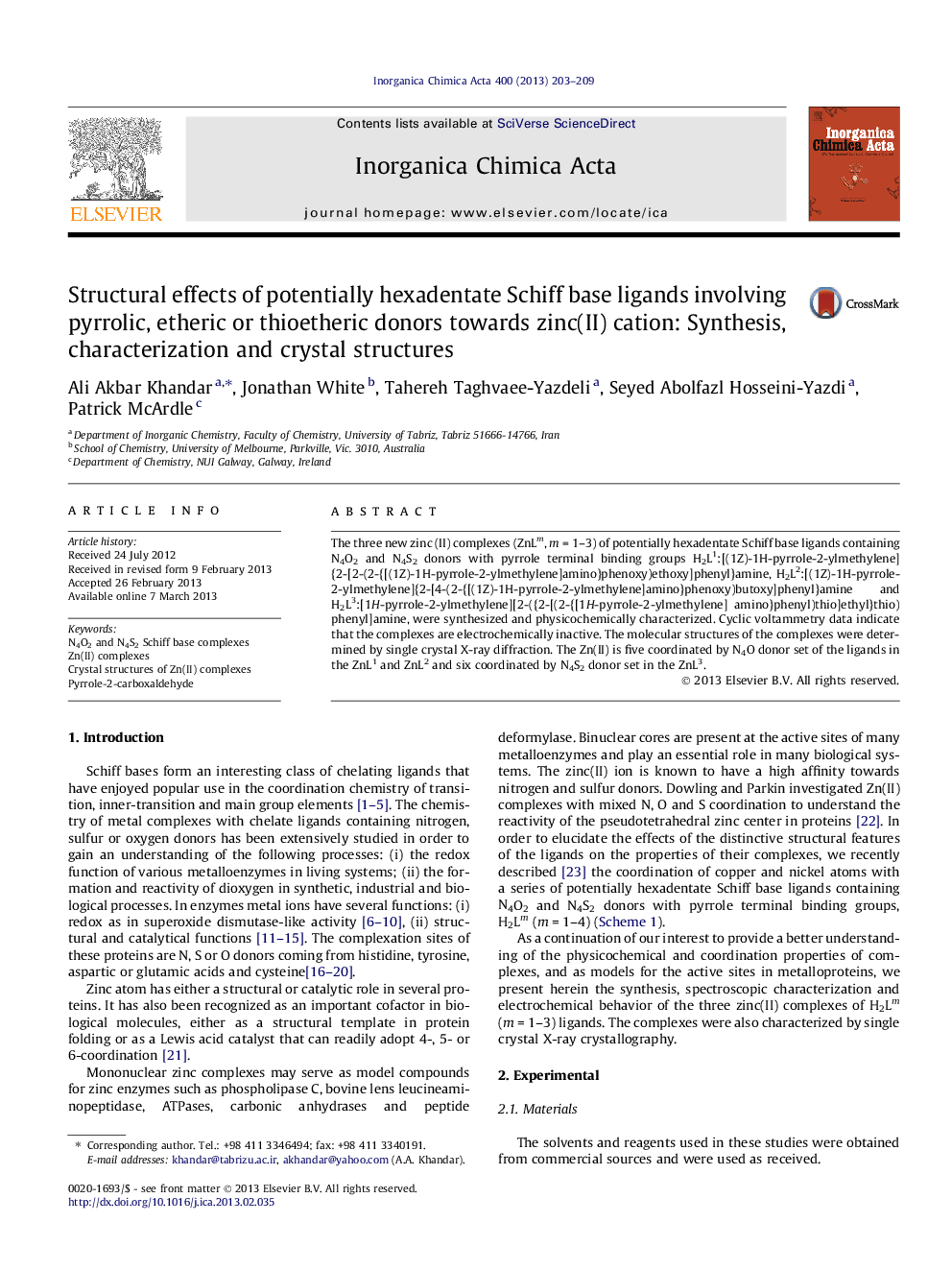| Article ID | Journal | Published Year | Pages | File Type |
|---|---|---|---|---|
| 1307118 | Inorganica Chimica Acta | 2013 | 7 Pages |
•Aliphatic linkage has relatively little effect on coordination geometry around Zn(II).•Aliphatic linkage has a significant effect on the crystal structure.•Zn(II) forms five- and six-coordinated complexes with N4O2 and N4S2 Schiff bases.•The terminal pyrrolic nitrogens participate as anionic nirogens in complexation.•Zn–Npyrrole bonds are relatively stronger than to Zn–Nimine bonds.
The three new zinc (II) complexes (ZnLm, m = 1–3) of potentially hexadentate Schiff base ligands containing N4O2 and N4S2 donors with pyrrole terminal binding groups H2L1:[(1Z)-1H-pyrrole-2-ylmethylene]{2-[2-(2-{[(1Z)-1H-pyrrole-2-ylmethylene]amino}phenoxy)ethoxy]phenyl}amine, H2L2:[(1Z)-1H-pyrrole-2-ylmethylene]{2-[4-(2-{[(1Z)-1H-pyrrole-2-ylmethylene]amino}phenoxy)butoxy]phenyl}amine and H2L3:[1H-pyrrole-2-ylmethylene][2-({2-[(2-{[1H-pyrrole-2-ylmethylene] amino}phenyl)thio]ethyl}thio)phenyl]amine, were synthesized and physicochemically characterized. Cyclic voltammetry data indicate that the complexes are electrochemically inactive. The molecular structures of the complexes were determined by single crystal X-ray diffraction. The Zn(II) is five coordinated by N4O donor set of the ligands in the ZnL1 and ZnL2 and six coordinated by N4S2 donor set in the ZnL3.
Graphical abstractSynthesis, characterization, cyclic voltammetry and crystal structures of zinc(II) complexes with a series of potentially hexadentate ligands containing pyrrole terminal binding groups have been investigated.Figure optionsDownload full-size imageDownload as PowerPoint slide
